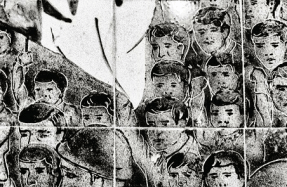
It is perhaps impossible to think of Delhi as one cohesive city; it is many cities folded into one, with multiple temporalities and urbanities existing in simultaneity, and no singular image is able to communicate its complexities. Moving images, with their ability to convey experienced time as past histories and present duration, have the capacity to record, construct, and articulate the city through its ephemeral soundscapes and physical rhythms. Dilli dilwalon ki (Delhi belongs to those with large hearts) goes a popular expression. Yet in whose hearts does a city reside? In which street or enclave do we locate its identifiable character? Who can claim to be of the city and lay claim to it? Whose lives, stories, and desires build its identity? Delhi is a city constantly in formation—defined not by legal circumscriptions of settlements, citizenry, and language but by its people in continual negotiation with this most complex of places.
One of the earliest films about Delhi, a 1938 short titled and shot by the British cinematographer Jack Cardiff, was intended as a portrait of the city. Its voice-over describes the vast plains of northern India as “barren land” on which seven successive cities were built, “each… fallen into disuse and decay,” while the new imperial city




